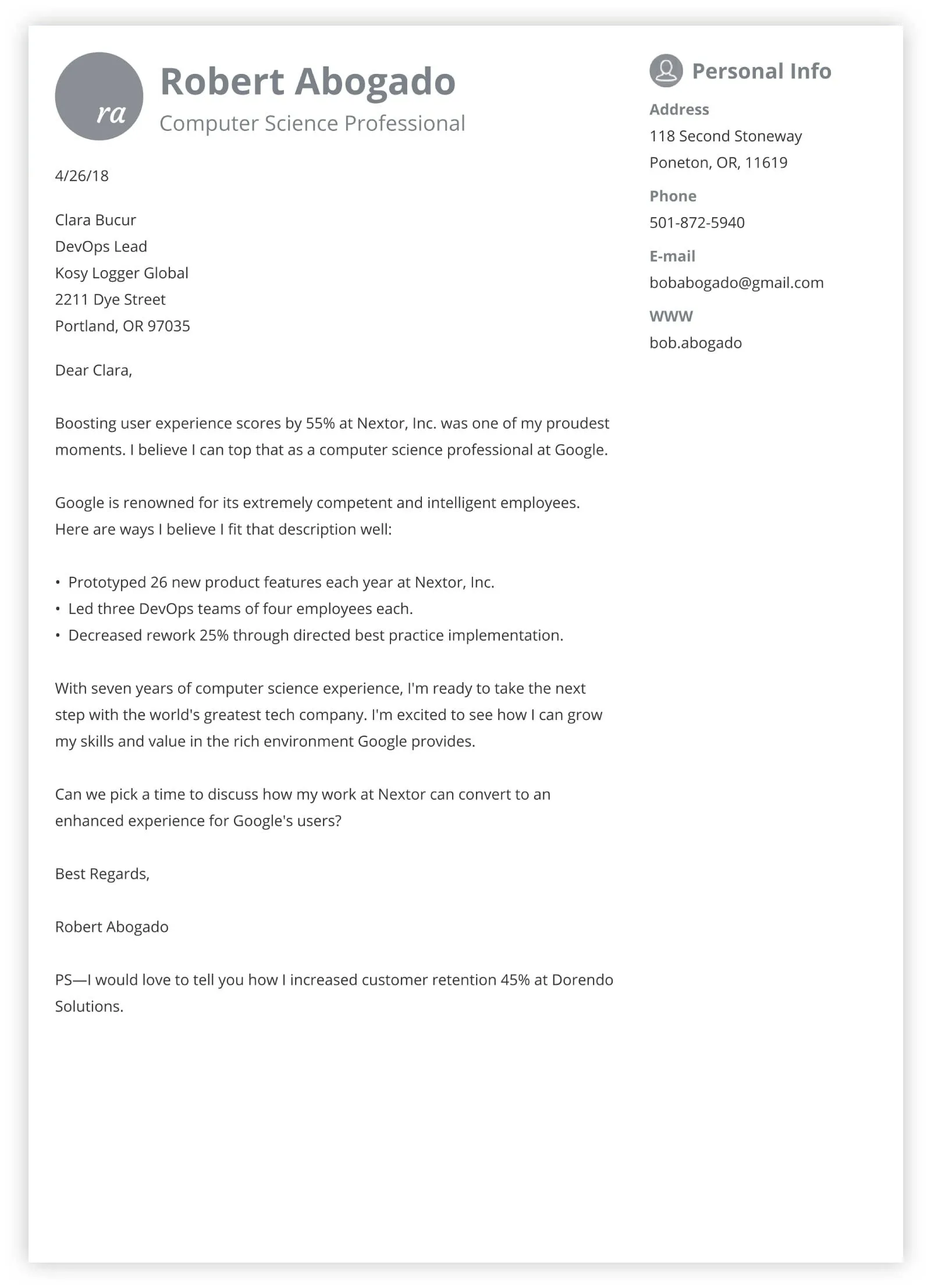What is a Cover Letter
A cover letter is a crucial document that accompanies your resume when you apply for a job. It serves as your introduction to a potential employer, allowing you to highlight your relevant skills, experiences, and qualifications in a personalized way. It is an opportunity to make a great first impression and demonstrate your genuine interest in the position and the company. The primary purpose of a cover letter is to persuade the hiring manager to read your resume and consider you for an interview. A well-crafted cover letter can significantly increase your chances of landing an interview and ultimately securing the job. It shows you are taking the time to carefully apply and go above and beyond simply submitting a resume.
Why Is a Cover Letter Important
In today’s competitive job market, a cover letter is an essential tool for job seekers. It provides an opportunity to showcase your personality, enthusiasm, and communication skills, which may not be fully apparent in a resume. A cover letter allows you to elaborate on your qualifications, explain any career gaps, and demonstrate how your skills and experiences align with the specific requirements of the job. It helps you to differentiate yourself from other applicants by highlighting your unique value proposition. Moreover, a cover letter shows that you have taken the time to understand the role and the company, demonstrating your genuine interest and commitment.
Essential Components of a Cover Letter
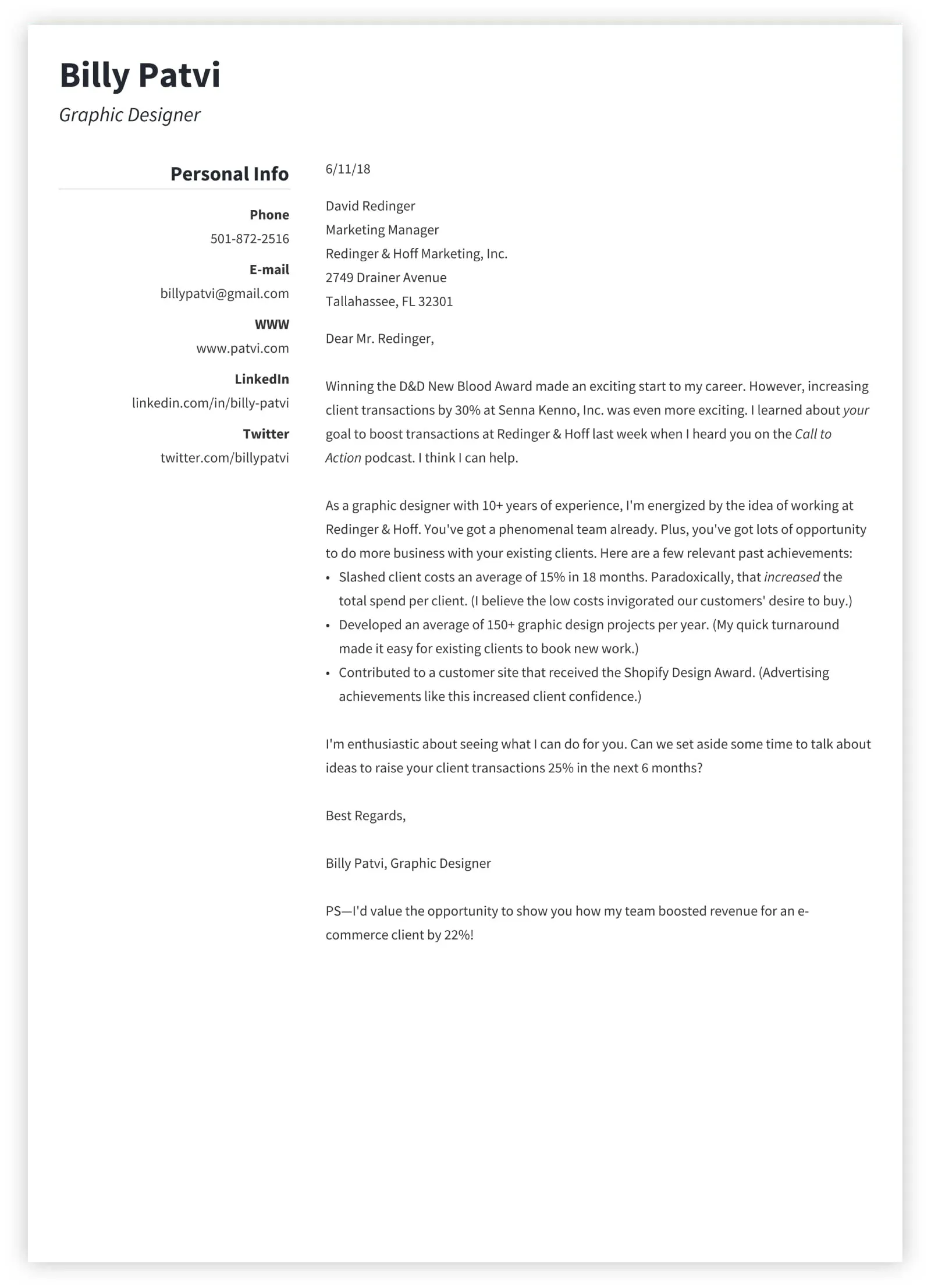
A well-structured cover letter consists of several key components that work together to make a compelling case for your candidacy. These components ensure that you provide all the necessary information and present yourself in the best possible light. Each part of the cover letter plays a vital role in conveying your message and persuading the hiring manager to consider your application. Make sure you include each of the components below to maximize your chances of success. A cover letter should be clear, concise, and tailored to the specific job and company.
Contact Information
Begin your cover letter by providing your contact information at the top. This typically includes your full name, phone number, email address, and optionally, your LinkedIn profile URL or professional website. Ensure your contact information is accurate and up-to-date to allow the hiring manager to easily reach you. It’s also recommended to use a professional-sounding email address. Presenting your contact details clearly and prominently ensures that the employer can easily get in touch with you if they are interested in your application. This should be placed at the top left or right corner of the document, depending on your preferred style.
Date
Below your contact information, include the date on which you are submitting your cover letter. This is important for record-keeping and demonstrates that your application is current. Use the standard format of Month, Day, Year (e.g., January 20, 2024). Placing the date correctly helps to maintain a professional appearance and provides essential context for the recipient. The date should be aligned to the left or right side of the document, in line with the recipient’s information or your contact details.
Recipient Information
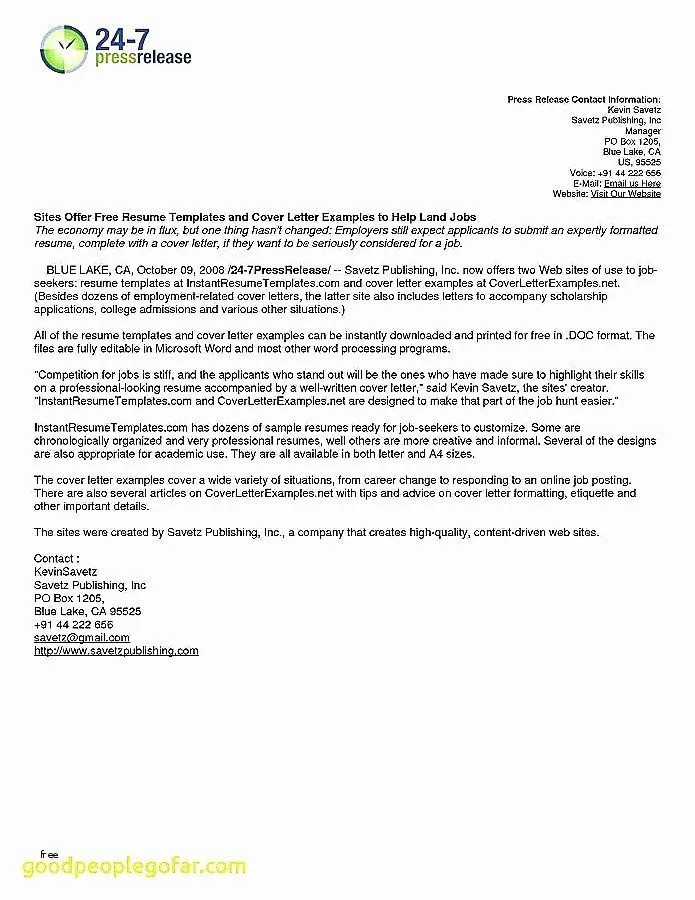
Address your cover letter to the hiring manager or the specific person in charge of recruitment if possible. Research the company’s website or use LinkedIn to find the correct contact name. If you cannot find a specific name, use a general salutation like “Dear Hiring Manager”. Addressing the cover letter to a specific person makes your application more personal and shows that you’ve taken the time to learn about the company and the role. Including the correct name is a simple way to make a great first impression.
Salutation
Start your cover letter with a professional salutation. “Dear [Hiring Manager Name],” is a great option, showing you’ve addressed the letter to a specific person. If you’re unsure of the name, use “Dear Hiring Manager,” or “Dear [Department Name] Hiring Team.” Avoid generic greetings such as “To Whom It May Concern.” Use a formal tone to maintain professionalism and set the right tone for the letter. The salutation establishes a respectful and engaging tone from the outset, setting the stage for the rest of the letter.
The Opening Paragraph
The opening paragraph is your chance to make a strong first impression. It should immediately grab the reader’s attention and clearly state the purpose of your letter. A well-crafted opening paragraph should convey your enthusiasm for the position and the company and briefly mention how your qualifications align with the job requirements. Aim to be concise and impactful. Avoid generic statements and instead, provide a compelling hook that piques the reader’s interest. The opening paragraph sets the stage for the rest of your cover letter, so making it engaging is crucial.
Grabbing Attention
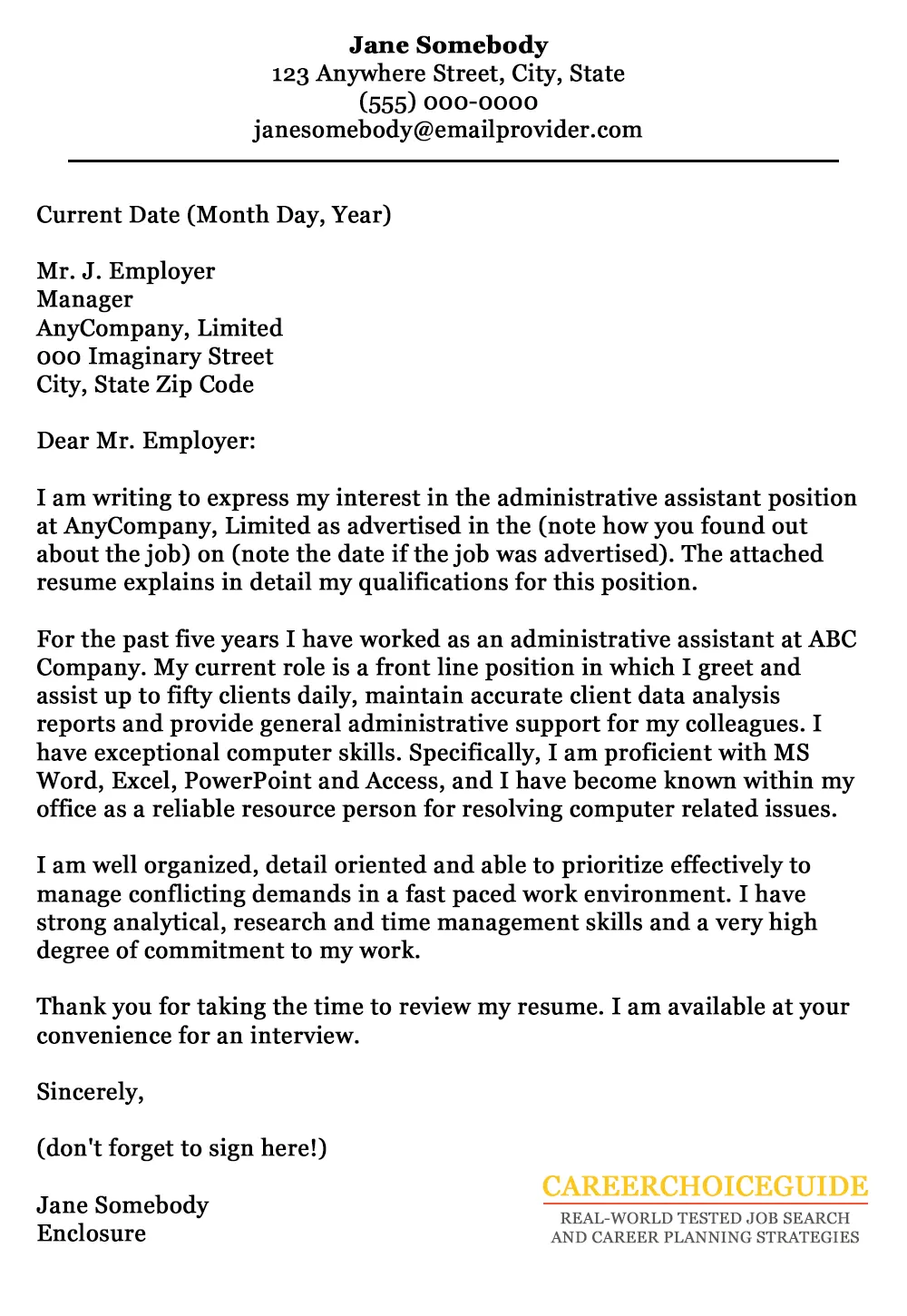
Start your cover letter with an attention-grabbing opening. Instead of stating the obvious, consider beginning with an impressive achievement, a relevant anecdote, or a compelling statement about why you are interested in the company or the role. This helps to immediately capture the hiring manager’s interest and makes them want to read more. Be concise and make sure your opening is relevant to the job you’re applying for and demonstrates your understanding of the company and the role. Avoid starting with a generic sentence, such as “I am writing to apply for the position…”
Stating Your Purpose
After grabbing the reader’s attention, clearly state the purpose of your cover letter and the specific position you are applying for. Mention the job title and where you found the job listing (e.g., company website, job board). This helps the hiring manager quickly understand what role you are interested in and confirms that you are applying for the correct position. Be straightforward and professional. Use clear and direct language to communicate the purpose of your letter.
Highlighting Key Skills and Experiences
The body of your cover letter is where you demonstrate how your skills and experiences align with the job requirements. This is the most important part of your cover letter. Focus on the key skills and experiences mentioned in the job description and provide specific examples of how you have demonstrated those skills in previous roles. Use action verbs and quantify your achievements whenever possible to make your accomplishments more impactful. Tailor your cover letter to each job, highlighting the most relevant aspects of your background. Provide specific examples of your accomplishments that showcase your abilities and the value you bring to the role. Show, don’t just tell.
Showcasing Achievements
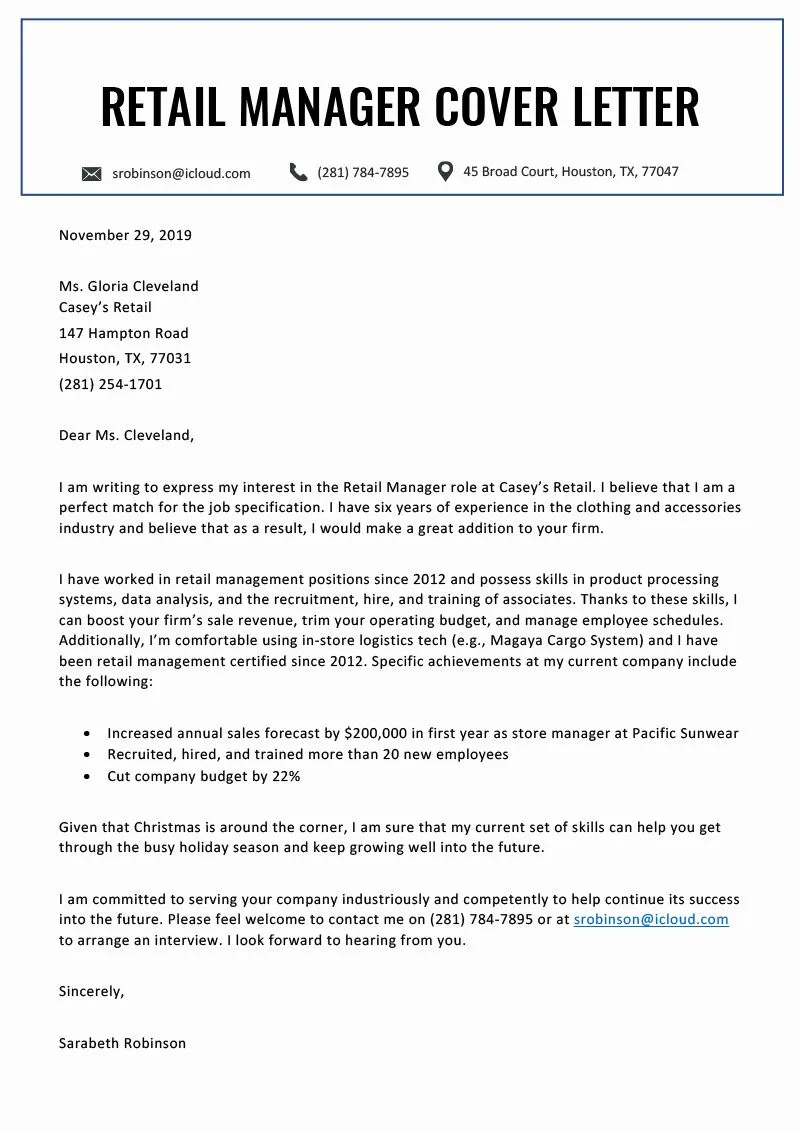
Use the body of your cover letter to showcase your achievements and accomplishments. Instead of simply listing your responsibilities, describe your contributions to previous roles, and the positive outcomes you achieved. Use the STAR method (Situation, Task, Action, Result) or the CAR method (Challenge, Action, Result) to structure your examples and make them more compelling. Provide specific, measurable results to demonstrate your impact. Showcasing achievements helps hiring managers understand your capabilities and the value you can bring to their organization.
Quantifying Results
Whenever possible, quantify your results with numbers, percentages, and specific data. Quantifying your accomplishments makes them more impactful and easier for the hiring manager to understand. Use metrics to illustrate the impact of your work and demonstrate your ability to achieve results. Include numbers to show how you increased sales, reduced costs, improved efficiency, or enhanced customer satisfaction. Providing quantifiable results helps you to stand out and show the value you can bring to the company.
Tailoring to the Job Description
Carefully review the job description and tailor your cover letter to match the specific requirements and keywords used. Highlight the skills, experiences, and qualifications that the employer is seeking. Use the language and keywords from the job description to demonstrate that you have the necessary qualifications. This shows that you have taken the time to understand the role and are a good fit for the position. Tailoring your cover letter increases your chances of getting noticed and selected for an interview.
Expressing Enthusiasm and Fit
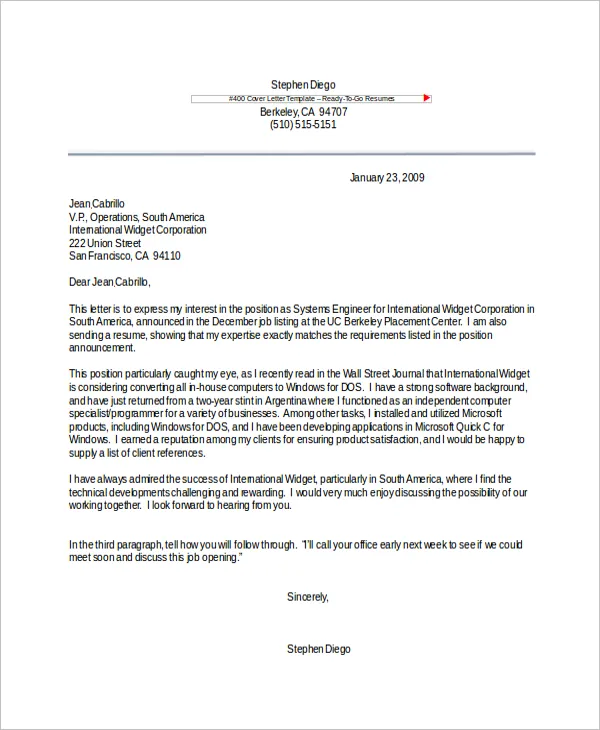
Throughout your cover letter, express your enthusiasm for the position and the company. Demonstrate your understanding of the company’s mission, values, and culture, and explain why you are a good fit. Show that you have researched the company and are genuinely excited about the opportunity. Highlighting your enthusiasm helps to create a positive impression and demonstrates your commitment to the role. Expressing enthusiasm helps demonstrate that you are a good cultural fit.
The Closing Paragraph
The closing paragraph is your final opportunity to make a strong impression. It should reiterate your interest in the position, summarize your key qualifications, and include a clear call to action. The closing paragraph should be concise, professional, and leave the hiring manager with a positive impression of your candidacy. A well-crafted closing paragraph can significantly increase your chances of getting an interview. The closing paragraph summarizes why you are the ideal candidate.
Reiterating Interest
In the closing paragraph, reiterate your interest in the position and the company. Briefly summarize why you are excited about the opportunity and why you believe you are a good fit. Express your genuine interest in the role and reinforce your desire to contribute to the company’s success. Remind the hiring manager of your key qualifications and the value you bring.
Call to Action
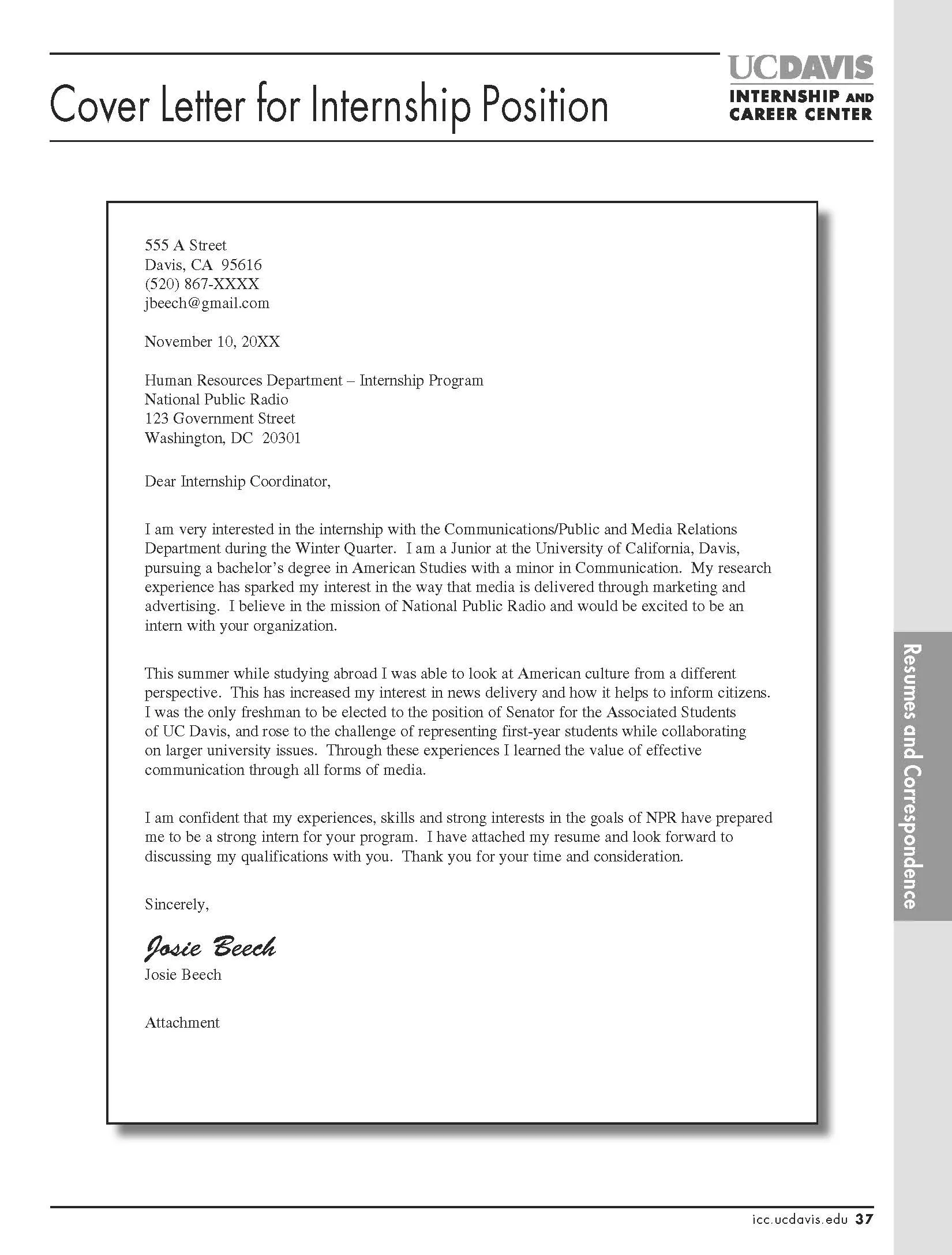
Include a clear call to action in your closing paragraph. This could be a request for an interview or a statement about your availability for a discussion. Make it easy for the hiring manager to take the next step. Providing a clear call to action ensures that the hiring manager knows what you want them to do next. A direct call to action increases your chances of moving forward in the hiring process. For example, write “I am eager to discuss how my skills and experience can benefit your team. I am available for an interview at your earliest convenience.”
Formal Closing and Signature
End your cover letter with a professional closing, such as “Sincerely,” “Best regards,” or “Yours sincerely.” Follow the closing with your typed name. If you are submitting a printed cover letter, leave space for your signature above your typed name. Use a professional and appropriate closing to maintain the tone of the letter. The formal closing and signature provide a final touch of professionalism to your cover letter.
Formatting and Proofreading
Formatting and proofreading are essential for creating a professional cover letter. Proper formatting makes your letter easy to read and visually appealing, while thorough proofreading ensures that your letter is free of errors. A well-formatted and error-free cover letter reflects your attention to detail and your commitment to quality.
Font and Layout
Choose a professional and easy-to-read font, such as Times New Roman, Arial, or Calibri. Use a standard font size (11 or 12 points) and ensure your text is well-spaced. Use a clear layout with consistent margins and line spacing. Avoid using excessive formatting or flashy fonts that can detract from your message. A clean and uncluttered layout makes your cover letter more accessible and helps the hiring manager focus on the content. Ensure you use 1-inch margins on all sides. Use single-spaced text within paragraphs and double-space between paragraphs.
Proofreading for Errors
Carefully proofread your cover letter for any grammatical errors, spelling mistakes, or typos. Check for consistency in formatting, such as date formats and the use of bolding and italics. It is always a good idea to have someone else review your cover letter for you, as a fresh pair of eyes can often catch errors that you might miss. Proofreading ensures that your cover letter is polished and professional. Errors can undermine your credibility and make a negative impression on the hiring manager. Make sure you are using a grammar and spell checker, and always read the letter aloud.
Cover Letter Examples
Reviewing cover letter examples can provide valuable insights into how to structure and write your own cover letter. Examples can show you various formats, styles, and tones. Use examples as a guide, but always tailor your cover letter to your specific situation. Many online resources offer cover letter templates and examples for different industries and job roles. Use those examples to understand what the recruiter is looking for and how to convey your skills and experiences.
Cover Letter Template Download
Consider using a cover letter template to streamline the writing process. Templates provide a pre-designed structure and formatting, which can save you time and ensure that your cover letter is well-organized. You can find cover letter templates online, in word processing software, and career resources. However, always customize the template to match your unique qualifications and the specific job you are applying for. Make sure the template is appropriate and up-to-date. Remember that you will still need to personalize the template to reflect your individual skills and experiences, and to demonstrate your interest in the role and company.
